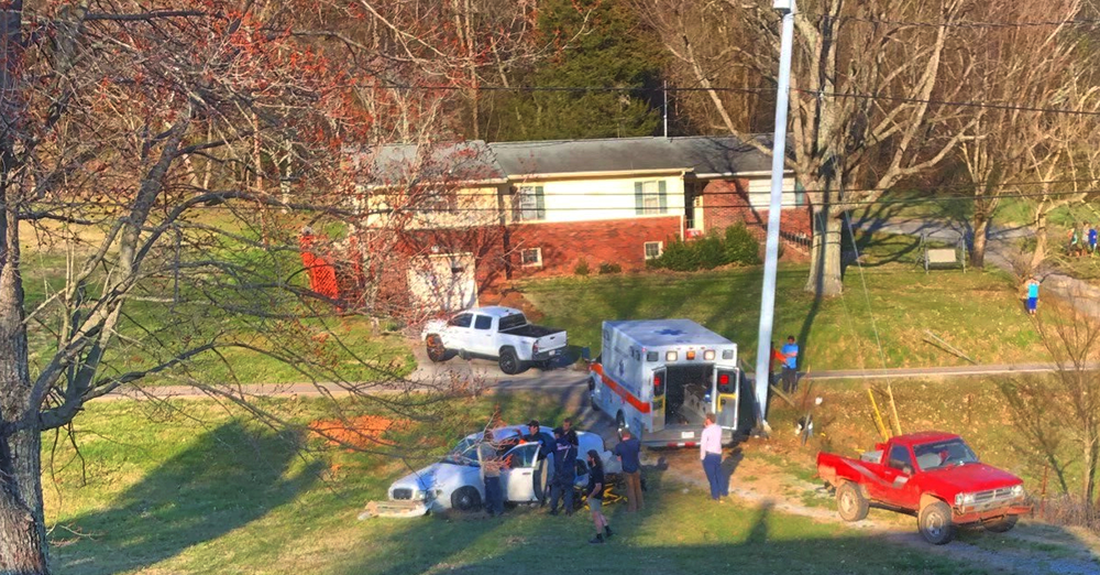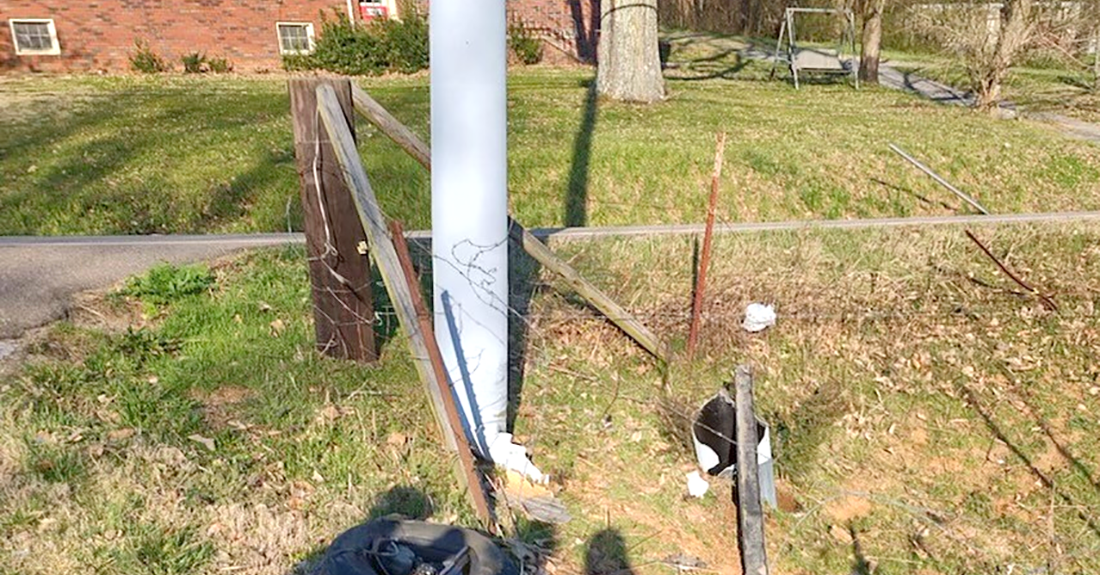
Utility poles are vital parts of infrastructure, supporting the electrical and communication networks that power our lives. While we might take these structures for granted, their performance after vehicle collisions can greatly affect safety, power reliability, and operational recovery.
When a vehicle collides with a utility pole, the force of the impact transfers to the pole, resulting in stress and structural damage. However, not all poles respond to impact in the same way. Understanding what happens when a vehicle impacts utility poles helps power company workers, rural electric cooperatives, and municipalities enhance safety and manage costs.
The Mechanics of Vehicle Impact
The outcome of a collision depends on several factors: the vehicle’s speed and weight, the angle of impact, and the composition of the pole. Wooden poles may fracture or splinter under extreme stress, breaking off at the point of impact. A sudden failure can lead to widespread hazards, such as downed lines and scattered debris, that complicate repairs and increase safety risks.
By contrast, ductile iron poles from McWane Poles handle impact forces differently. Ductile iron’s unique properties allow the pole to bend and absorb energy without snapping. A controlled response helps the pole minimize debris and reduce strain on the connected lines and nearby structures.
Why Controlled Response Matters
The ability of ductile iron poles to bend rather than break provides several advantages:
Enhanced Safety
A pole that bends can absorb impact energy, reducing the likelihood of debris scattering across roadways or hitting nearby property. With a consistent 60 ksi minimum tensile strength, ductile iron poles offer a more predictable failure point compared to other utility pole materials, such as wood. They don’t usually fall completely, but instead tear at ground level, keeping the power lines intact. In some cases, if the utility lines are especially taut, a secondary break can occur above the point of impact, but the overall structure still tends to remain elevated, minimizing hazards.
Reduced Grid Disruption
Because ductile iron poles maintain structural integrity during an impact, the stress on connected power lines is minimized. Ductile iron reduces the risk of cascading failures along the network, allowing for quicker and safer power restoration. Since they don’t fall in the same way other materials do, they can keep utility and electrical lines up and connected to the grid even when damaged by a vehicle.
Faster Repairs
Poles that do not fracture completely are easy to remove and replace. This shortens repair times and reduces operational costs for power companies and municipalities. Ductile iron poles often don’t fully collapse due to their lightweight material being supported by the wires, which keeps them elevated. Instead, they tear at the ground line, keeping electrical lines elevated. This allows first responders to secure the scene without the danger of downed wires.
Immediate Safety Hazards
A damaged utility pole presents immediate safety hazards. Live electrical wires that fall onto the roadway, vehicles, or nearby structures pose a high risk of electrocution. Wires can energize objects they touch, turning fences, guardrails, and even puddles into potential conductors of electricity. Additionally, sparks from damaged electrical equipment can ignite fires in areas with dry vegetation or flammable materials.
Debris from the pole and the vehicle can scatter across the roadway, creating obstacles that may cause secondary accidents. The initial collision often results in traffic congestion as lanes close to secure the area. First responders must exercise extreme caution when approaching the scene to avoid electrical hazards, which can delay emergency medical assistance to injured parties.

The Effect on Power Infrastructure
Utility pole damage can disrupt the electrical grid it supports. Outages can suddenly occur when power lines disconnect or short circuit. The extent of these outages depends on the pole’s location within the network.
A pole on a main transmission line can affect thousands of customers. Consistent power is essential for residential areas, commercial districts, hospitals, and emergency services. Restoring power requires a coordinated effort.
Utility crews should keep the area safe by working with law enforcement and emergency services to manage traffic and public safety. Only then can they assess the damage, isolate sections of the grid, and begin repairs or replacements. Depending on the severity of the damage and environmental conditions, the entire process can take several hours to days.
Operational Challenges for Power Companies
Responding to a utility pole collision involves significant operational challenges for power companies. Mobilizing repair crews on short notice can strain resources, especially if the incident occurs during severe weather or peak demand times. Crews must have specialized training and equipment to handle live electrical components safely. Using bucket trucks, cranes, and other heavy machinery adds to the logistical complexity.
Communication is another critical aspect. Power companies must inform customers about outages and provide estimates for restoration. Inaccurate or delayed information can lead to customer dissatisfaction and damage the company’s reputation. Additionally, power companies may need to coordinate with local authorities, emergency services, and media outlets to manage the public response.
Financial Implications and Liability
The financial impact of a vehicle collision with a utility pole extends beyond immediate repair costs. Material expenses include replacing the pole, cables, transformers, and other damaged equipment.
Labor costs can escalate quickly, especially if it demands overtime pay for emergency repairs. Unplanned expenses may affect finances for rural electric cooperatives and small municipalities with limited budgets.
Liability issues also arise. The power company may face legal claims if the fallen pole causes property damage or personal injury or contributes to subsequent accidents. Insurance may cover some of these costs, but frequent incidents can increase premiums. Regulatory bodies may impose fines or require additional safety measures, further adding to the financial burden.
Understanding the Broader Impact
A deeper exploration of what happens when a vehicle impacts utility poles reveals a chain reaction affecting various aspects of the community. Traffic disruptions can hinder the movement of goods and services, negatively affecting local economies. Businesses without power may suffer financial losses due to interrupted operations. Schools and public facilities may need to close temporarily, disrupting daily life.
Another consideration is the environmental impact. Damaged poles and equipment can release hazardous materials, such as transformer oil, into the environment. Plus, cleanup efforts add to the overall cost and complexity of the response.
Upgrading to Resilient Power Line Poles
Investing in durable power transmission poles, such as ductile iron poles, reduces the impact of downtime and repairs due to vehicle collisions. McWane Poles provides alternatives to traditional wooden poles that have lower limitations in strength and longevity.
Ductile iron poles offer superior resilience against physical impacts and environmental degradation, providing a long-lasting solution.
Technological Advancements
Integrating smart grid technologies can further improve the response to utility pole collisions. Advanced monitoring systems can detect faults in real time and immediately isolate affected grid sections. Meanwhile, automated switches and reclosers can reroute power, minimizing the number of customers affected by an outage.
Balancing Costs and Reliability
Implementing these preventative measures and infrastructure upgrades requires carefully balancing costs and benefits. Power company leaders must evaluate the return on investment for different strategies. Balancing costs and reliability means considering the frequency of vehicle collisions, historical data on outages, and customer satisfaction metrics. The long-term savings in reduced outages, lower maintenance costs, and enhanced safety often justify the investment.
Proactive measures reduce the frequency and severity of outages and strengthen the trust between power providers and the communities they serve. Taking action today ensures a more reliable and secure energy future.

